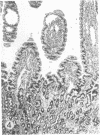Abstract
An Escherichia coli strain isolated from a patient with severe cholera-like diarrhea elaborates a partly heat-labile enterotoxin shown to cause prompt adenyl cyclase stimulation and isotonic fluid secretion by canine jejunum. Both responses disappear upon removal of the enterotoxin. The duration of action of a submaximal dose of this E. coli enterotoxin was brief, despite sustained exposure to the jejunum, suggesting inactivation of the enterotoxin by its interaction with the mucosa.
Inoculation of whole bacterial cultures of this E. coli strain into canine duodenum was followed by bacterial survival and induction of net secretion after 4-7 h. The onset of fluid production was associated with increasing gut mucosal adenyl cyclase activity. Washed bacterial cells could also produce fluid secretion. In vivo multiplication of this enterotoxin-producing E. coli was demonstrated 6-12 h after intraduodenal inoculation of approximately 106 organisms. This was associated with fluid secretion. Intestinal fluid production occurred without microscopic pathology in the mucosa.
Full text
PDF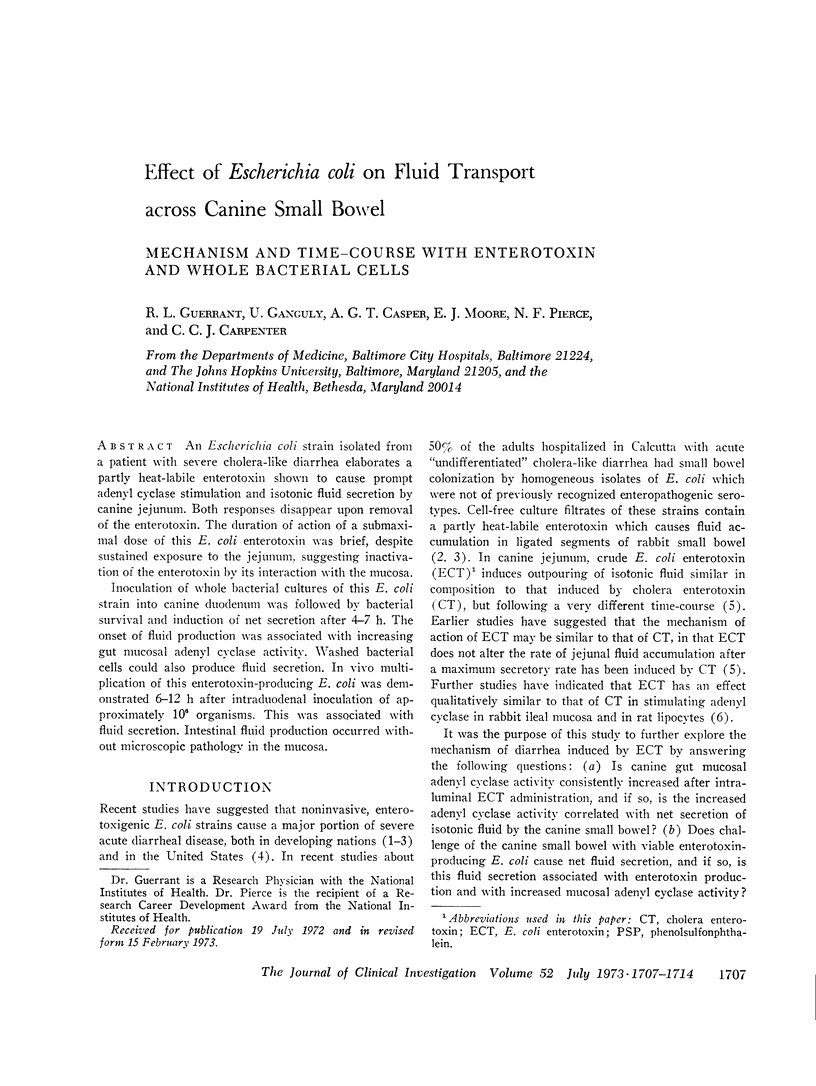

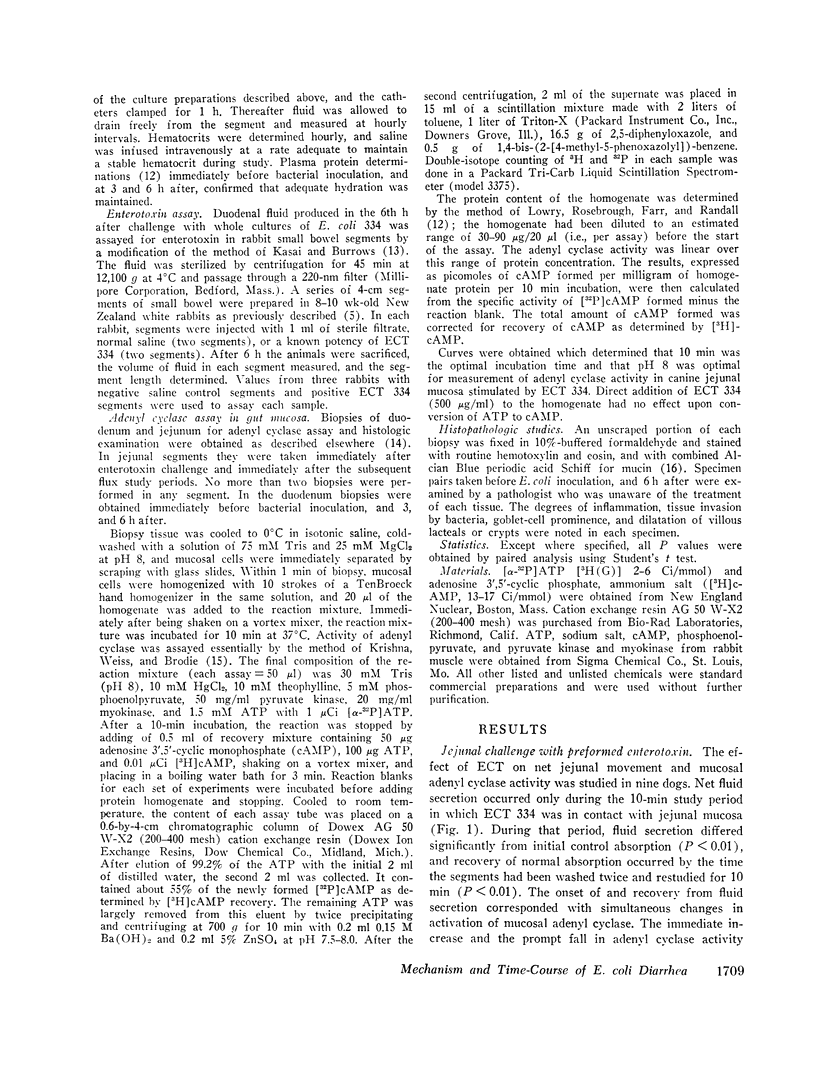
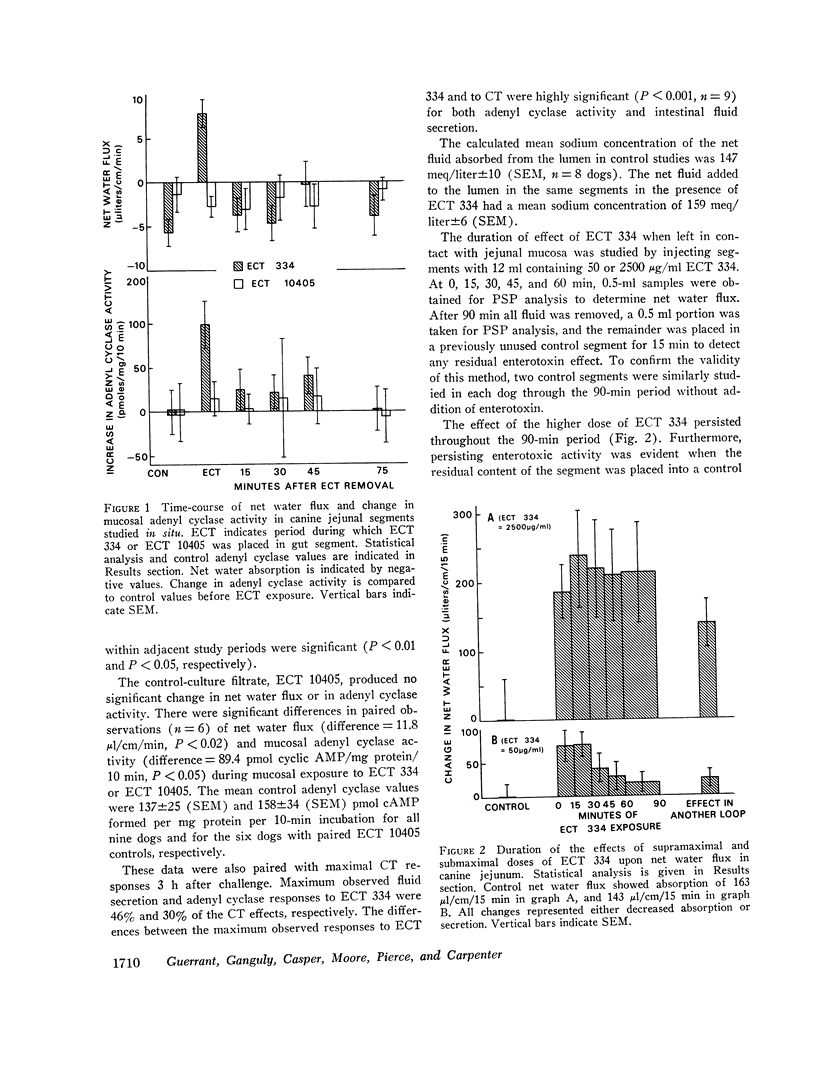



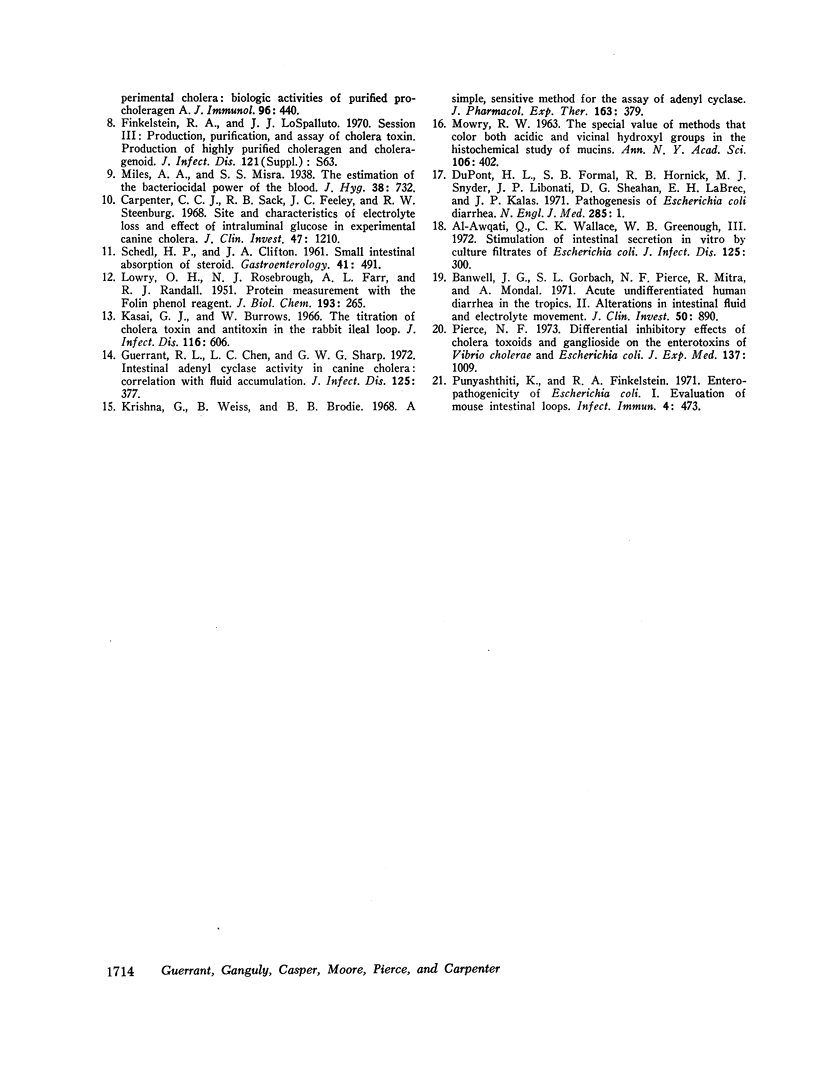
Images in this article
Selected References
These references are in PubMed. This may not be the complete list of references from this article.
- Al-Awqati Q., Wallace C. K., Greenough W. B., 3rd Stimulation of intestinal secretion in vitro by culture filtrates of Escherichia coli. J Infect Dis. 1972 Mar;125(3):300–303. doi: 10.1093/infdis/125.3.300. [DOI] [PubMed] [Google Scholar]
- Banwell J. G., Gorbach S. L., Pierce N. F., Mitra R., Mondal A. Acute undifferentiated human diarrhea in the tropics. II. Alterations in intestinal fluid and electrolyte movements. J Clin Invest. 1971 Apr;50(4):890–900. doi: 10.1172/JCI106561. [DOI] [PMC free article] [PubMed] [Google Scholar]
- Carpenter C. C., Sack R. B., Feeley J. C., Steenberg R. W. Site and characteristics of electrolyte loss and effect of intraluminal glucose in experimental canine cholera. J Clin Invest. 1968 May;47(5):1210–1220. doi: 10.1172/JCI105810. [DOI] [PMC free article] [PubMed] [Google Scholar]
- DuPont H. L., Formal S. B., Hornick R. B., Snyder M. J., Libonati J. P., Sheahan D. G., LaBrec E. H., Kalas J. P. Pathogenesis of Escherichia coli diarrhea. N Engl J Med. 1971 Jul 1;285(1):1–9. doi: 10.1056/NEJM197107012850101. [DOI] [PubMed] [Google Scholar]
- Evans D. J., Jr, Chen L. C., Curlin G. T., Evans D. G. Stimulation of adenyl cyclase by Escherichia coli enterotoxin. Nat New Biol. 1972 Apr 5;236(66):137–138. doi: 10.1038/newbio236137a0. [DOI] [PubMed] [Google Scholar]
- Finkelstein R. A., Atthasampunna P., Chulasamaya M., Charunmethee P. Pathogenesis of experimental cholera: biologic ativities of purified procholeragen A. J Immunol. 1966 Mar;96(3):440–449. [PubMed] [Google Scholar]
- Gorbach S. L. Acute diarrhea--a "toxin" disease? N Engl J Med. 1970 Jul 2;283(1):44–45. doi: 10.1056/NEJM197007022830111. [DOI] [PubMed] [Google Scholar]
- Gorbach S. L., Banwell J. G., Chatterjee B. D., Jacobs B., Sack R. B. Acute undifferentiated human diarrhea in the tropics. I. Alterations in intestinal micrflora. J Clin Invest. 1971 Apr;50(4):881–889. doi: 10.1172/JCI106560. [DOI] [PMC free article] [PubMed] [Google Scholar]
- Gorbach S. L., Khurana C. M. Toxigenic Escherichia coli: a cause of infantile diarrhea in Chicago. N Engl J Med. 1972 Oct 19;287(16):791–795. doi: 10.1056/NEJM197210192871603. [DOI] [PubMed] [Google Scholar]
- Guerrant R. L., Chen L. C., Sharp G. W. Intestinal adenyl-cyclase activity in canine cholera: correlation with fluid accumulation. J Infect Dis. 1972 Apr;125(4):377–381. doi: 10.1093/infdis/125.4.377. [DOI] [PubMed] [Google Scholar]
- Kasai G. J., Burrows W. The titration of cholera toxin and antitoxin in the rabbit ileal loop. J Infect Dis. 1966 Dec;116(5):606–614. doi: 10.1093/infdis/116.5.606. [DOI] [PubMed] [Google Scholar]
- Krishna G., Weiss B., Brodie B. B. A simple, sensitive method for the assay of adenyl cyclase. J Pharmacol Exp Ther. 1968 Oct;163(2):379–385. [PubMed] [Google Scholar]
- LOWRY O. H., ROSEBROUGH N. J., FARR A. L., RANDALL R. J. Protein measurement with the Folin phenol reagent. J Biol Chem. 1951 Nov;193(1):265–275. [PubMed] [Google Scholar]
- Pierce N. F. Differential inhibitory effects of cholera toxoids and ganglioside on the enterotoxins of Vibrio cholerae and Escherichia coli. J Exp Med. 1973 Apr 1;137(4):1009–1023. doi: 10.1084/jem.137.4.1009. [DOI] [PMC free article] [PubMed] [Google Scholar]
- Pierce N. F., Wallace C. K. Stimulation of jejunal secretion by a crude Escherichia coli enterotixin. Gastroenterology. 1972 Sep;63(6):439–448. [PubMed] [Google Scholar]
- Punyashthiti K., Finkelstein R. A. Enteropathogenicity of Escherichia coli. I. Evaluation of mouse intestinal loops. Infect Immun. 1971 Oct;4(4):473–478. doi: 10.1128/iai.4.4.473-478.1971. [DOI] [PMC free article] [PubMed] [Google Scholar]
- SCHEDL H. P., CLIFTON J. A. Small intestinal absorption of steroids. Gastroenterology. 1961 Nov;41:491–499. [PubMed] [Google Scholar]
- Sack R. B., Gorbach S. L., Banwell J. G., Jacobs B., Chatterjee B. D., Mitra R. C. Enterotoxigenic Escherichia coli isolated from patients with severe cholera-like disease. J Infect Dis. 1971 Apr;123(4):378–385. doi: 10.1093/infdis/123.4.378. [DOI] [PubMed] [Google Scholar]




